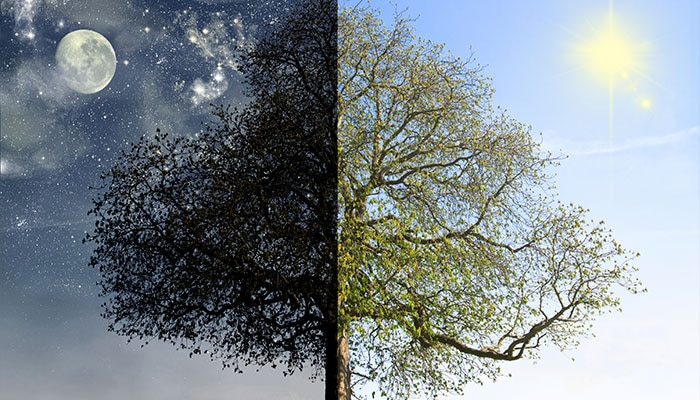While we believe that the books and resources recommended may be of value to you, keep in mind that these are suggestions only and you must do your own due diligence to determine whether the materials are appropriate and suitable for your use. PNC has no sponsorship or endorsement agreement with the authors or publishers of the materials listed.
OUR SKY

Day & Night
Children will learn about day and night.

Lesson Objective
Children will use flashlights to explore the difference between day and night.
Science
What You'll Need
- Flashlights – 1 per 2 children
- Chart paper
- Markers
What To Do
Note: Prior to the lesson, make three columns on the chart paper with the headings Day, Night, and Both.
- Discuss with the children things they see during the day, night, and both (see Guiding Student Inquiry). Record all responses on the chart paper.
- Tell the children they are going to use flashlights to see how the Sun affects day and night on the Earth.
- Invite a child to stand up and be the “Earth” while the other children remain seated.
- Turn off the lights, and pull the shades to darken the classroom.
- Tell the children they will be the Sun and to watch where the teacher is shining the flashlight.
- Turn on a flashlight, and shine it on the tummy of the child standing.
- Continue to ask children questions about day and night (see Guiding Student Inquiry).
- Explain that the Earth rotates, or spins slowly. When the Earth turns far enough around, we can’t see the Sun anymore, and it is nighttime (see Did You Know?).
- Have the “Earth” child slowly turn around until the Sun is on their back. Point out that the Earth spins very slowly.
- Tell the children when the “Sun” is shining on the front of the “Earth” child, it is daytime, and when the “Sun” is shining on the back of the “Earth” child, it is nighttime.
- Pair the children, and give one member of each pair a flashlight; this is the “Sun” child, and their partner is the “Earth” child. Give the children time to experiment with this partnership; then, have them change places so the “Sun” child is now the Earth and the “Earth” child is now the Sun.
Resources
Home School Resources
Home educators: use these printable lesson PDFs to teach this lesson to your home schoolers. They're available in English and Spanish.
Content Provided By
Common Core State Standards Initiative – These lessons are aligned with the Common Core State Standards ("CCSS"). The CCSS provide a consistent, clear understanding of the concepts and skills children are expected to learn and guide teachers to provide their students with opportunities to gain these important skills and foundational knowledge [1]. Visit the CCSS


